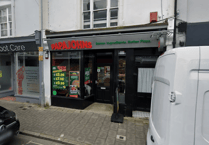Mid Devon is among the key areas boosting house prices in the South West as averages for the region reach a record high, new figures show.
The statistics, from the Halifax House Price Index, which monitors the amounts paid for properties across the UK, have shown that house prices in the South West reached an average of £313,003 in August - a record high for the region.
This represents a 14.5 per cent increase on the same period last year, with Halifax highlighting that the strongest areas in the region included Mid-Devon.
A Halifax spokesperson commented: “The South West continues to see strong growth and is the top region across England for UK house price inflation.
“The average house price in the South West is now £313,003, a new record high for the region, and up by 14.5 per cent over the last year.
“Buyers are attracted to living in the South West with its stunning coastline and open green spaces, and prices have gone up nearly £40,000 over the last year.
“Strong growth has particularly been seen in areas such as Stroud, Mid-Devon and Torbay. ”
Across the UK, average house prices have increased by 0.4 per cent compared to July, which saw a 0.1 per cent dip.
Kim Kinnaird, Director of Halifax Mortgages, commented: “The slight fall seen in average house prices in July (-0.1 per cent) was offset by a return to growth during August – although the increase (+0.4 per cent month-on-month) was relatively modest compared to the rapid inflation we’ve witnessed in recent times. Over the last year the rate of monthly house price inflation has averaged around +0.9 per cent.
“The typical house price reached another record high in August (£294,260) – as it has done in seven out of the eight months so far this year. However, the annual rate of growth dropped to +11.5 per cent, from +11.8 per cent in July, the lowest level in three months.
“While house prices have so far proved to be resilient in the face of growing economic uncertainty, industry surveys point towards cooling expectations across the majority of UK regions, as buyer demand eases, and other forward-looking indicators also imply a likely slowdown in market activity.
“Firstly, there is the considerable hit to people’s incomes from the cost-of-living squeeze. The 80 per cent rise in the energy price cap for October will put more pressure on household finances, as will the further increases expected for January and April. At the levels being predicted, this is likely to constrain the amounts that prospective homebuyers can afford to borrow, on top of the adverse impact of higher energy prices on the wider economy.
“While government policy intervention may counter some of these impacts, borrowing costs are also likely to continue to rise, as the Bank of England is widely expected to continue raising interest rates into next year.
“With house price to income affordability ratios already historically high, a more challenging period for house prices should be expected. However, this should be viewed in the context of the exceptional growth witnessed in recent years, with average house prices having increased by more than £30,000 over the last 12 months alone.”




